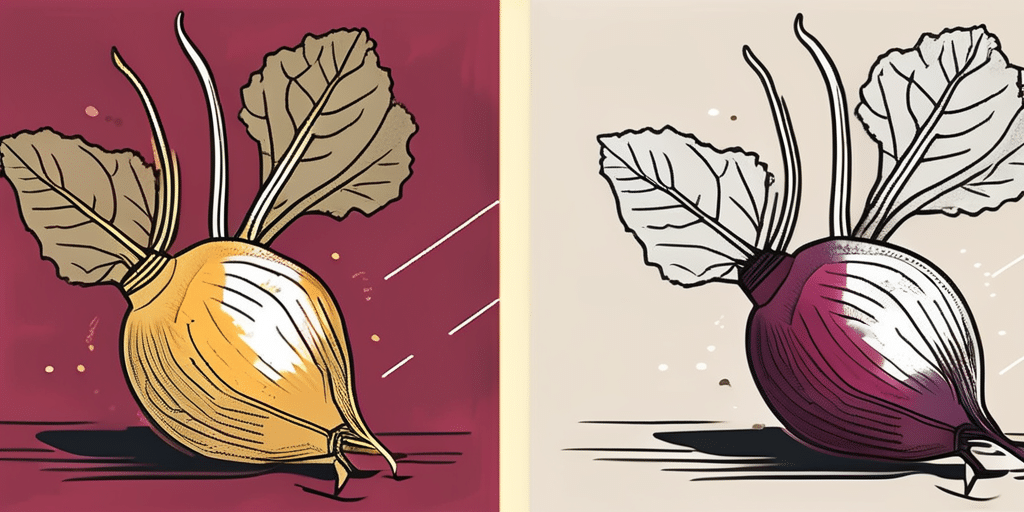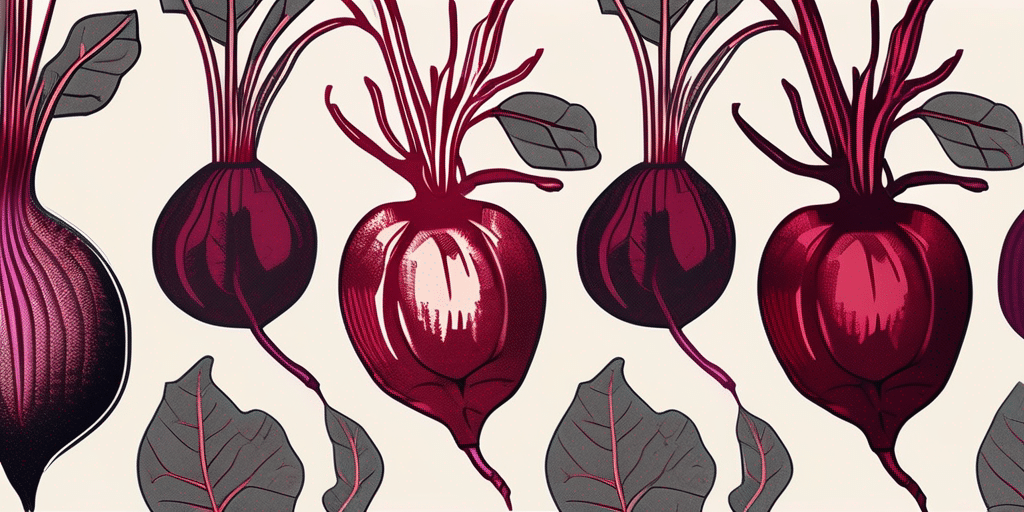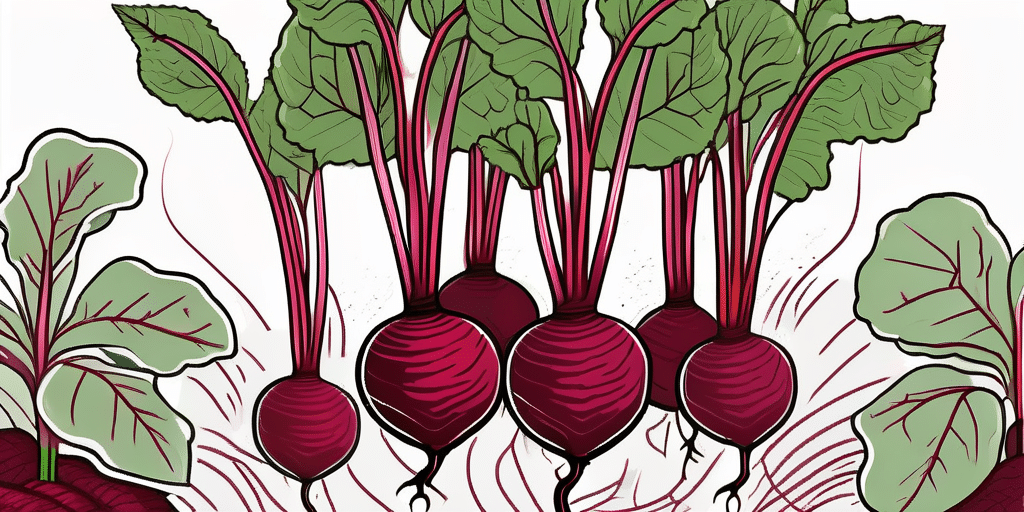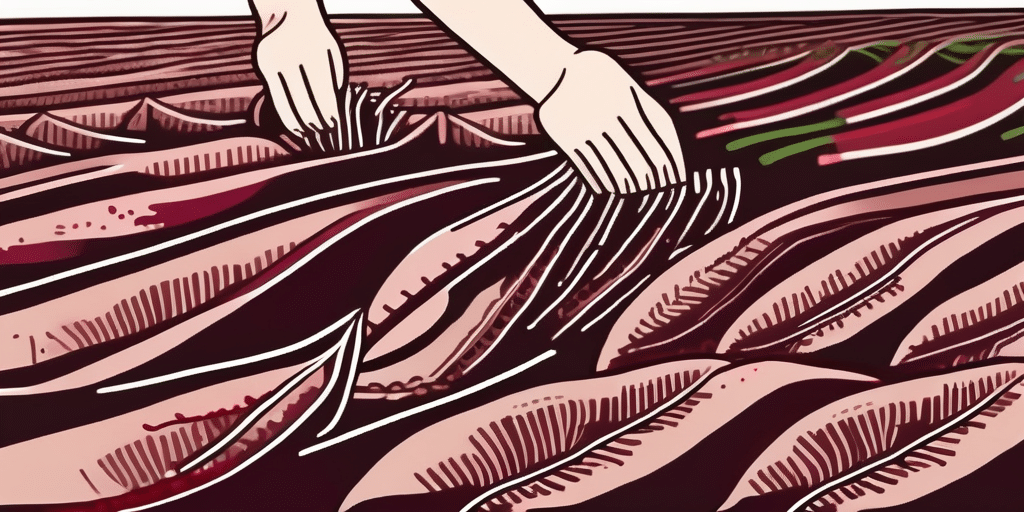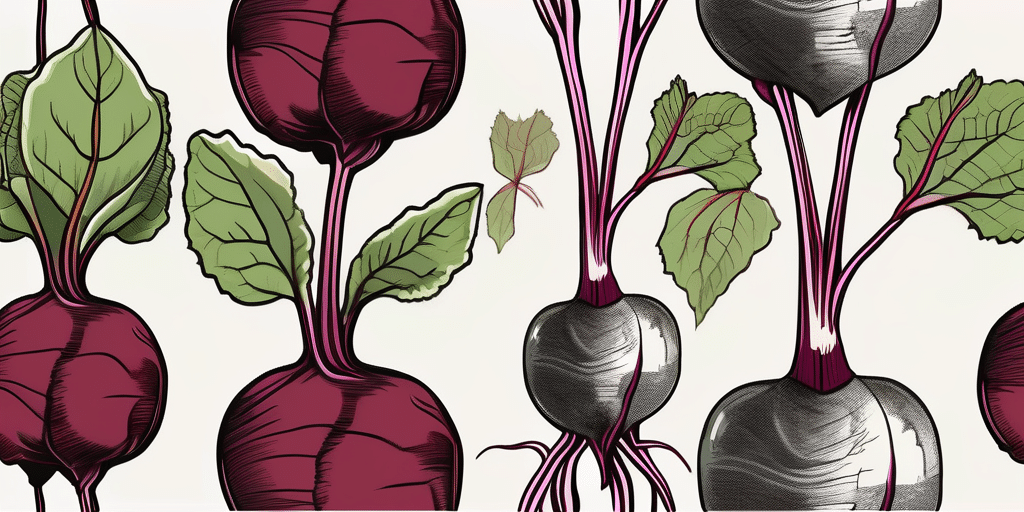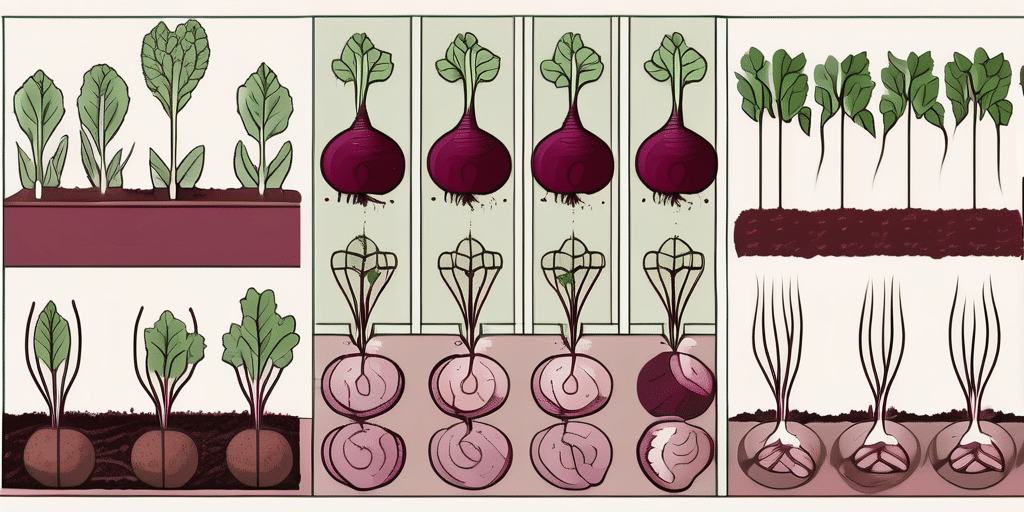Chioggia beets, also known as candy stripe or bullseye beets, are a unique and beautiful addition to any garden. With their vibrant pink and white rings, they not only add visual interest but also offer a flavorful and nutritious root vegetable. Whether you are an experienced gardener or just starting out, this guide will provide you with all the information you need to successfully grow Chioggia beets.
When to Start Chioggia Beets
Before diving into the specifics of growing Chioggia beets, it’s important to know when to start the process. Chioggia beets can be grown both in spring and fall. For spring planting, sow the seeds as soon as the soil can be worked and all danger of frost has passed. In areas with mild winters, you can also start them in the late summer or early fall.
Spring planting of Chioggia beets is ideal for those looking to enjoy an early harvest. By starting the seeds as soon as the soil is workable, you can ensure a bountiful supply of these vibrant, candy-striped beets in your garden. The cool temperatures of spring help the beets establish strong roots and develop their signature concentric rings of pink and white flesh.
On the other hand, fall planting of Chioggia beets offers a different set of advantages. Planting in late summer or early fall allows the beets to mature in the cooler temperatures of autumn, resulting in a sweeter and more tender crop. Additionally, fall-planted beets are less prone to bolting, as they are not exposed to the intense heat of summer. This makes them a great option for gardeners in regions with scorching summer temperatures.
How to Grow Chioggia Beets From Seed
Growing Chioggia beets from seed is a rewarding experience that can yield delicious and vibrant beets for your culinary creations. Chioggia beets, also known as candy cane or striped beets, are prized for their stunning red and white striped flesh, making them a unique addition to any garden or dish.
Here’s a step-by-step guide to help you successfully grow Chioggia beets from seed:
- Choose a well-draining location in your garden with full sun to partial shade. Beets thrive in fertile, well-draining soil that receives at least 6 hours of sunlight a day.
- Prepare the soil by removing any rocks, weeds, or debris that may impede the growth of your beets. Amend the soil with organic matter, such as compost or well-rotted manure, to provide essential nutrients for the growing plants.
- Sow the Chioggia beet seeds directly into the soil, spacing them about 1 inch apart and planting them about 1/2 inch deep. Ensure the soil is well-prepared and free of clumps to promote healthy root development.
- Water the seeds well after planting, ensuring the soil stays consistently moist throughout the germination process. Be careful not to overwater, as this can lead to rotting of the seeds or seedlings.
- Once the Chioggia beet seedlings emerge, thin them to a spacing of 3 inches apart to allow enough room for the roots to develop. Thinning is essential to prevent overcrowding and ensure each plant has ample space to grow and access to nutrients.
By following these steps and providing proper care, you can enjoy a bountiful harvest of Chioggia beets with their unique flavor and beautiful appearance. Happy gardening!
How and When to Transplant Chioggia Beets
If you prefer to start Chioggia beets indoors or want to transplant them to a different location in your garden, follow these steps:
- Start the seeds indoors in biodegradable pots or seed trays about 4 to 6 weeks before the last expected frost date.
- Fill the containers with seed starting mix and sow the seeds, covering them lightly with the soil mix.
- Keep the soil moist and place the containers in a warm location with indirect sunlight.
- After the seedlings have developed their first true leaves, transplant them into your garden beds or containers.
- Space the transplants about 3 inches apart, ensuring the soil is well-prepared and free of weeds.
Transplanting Chioggia beets can be a rewarding experience for any gardener. These unique beets, known for their striking red and white candy-striped flesh, thrive in well-draining soil with plenty of organic matter. When choosing a location for transplanting, consider a spot with full sun exposure to encourage healthy growth and vibrant colors in the beets.Before transplanting, it’s essential to prepare the soil properly. Ensure the soil is loose and friable, allowing the young beet roots to establish themselves easily. Adding compost or aged manure to the soil can provide essential nutrients for the growing beets. Additionally, incorporating a balanced fertilizer high in phosphorus can promote strong root development, leading to robust plants and a bountiful harvest.When transplanting the Chioggia beet seedlings, handle them carefully to avoid damaging the delicate roots. Gently loosen the soil around the seedlings in their containers before transplanting to reduce transplant shock. Water the transplants immediately after planting to help them settle into their new environment. With proper care and attention to detail, your Chioggia beets will flourish and provide you with a colorful and delicious addition to your garden bounty.
How to Plant Chioggia Beets – Spacing and Patterns
Proper spacing and patterns are essential for healthy beet growth and optimal yield. Follow these guidelines when planting Chioggia beets:
- Space the seeds or transplants about 3 inches apart in rows that are about 12 to 18 inches apart.
- For larger beet sizes, increase the spacing between plants to about 4 to 6 inches.
- If planting in containers or pots, choose a container that is at least 12 inches deep to accommodate the beet’s root growth.
- Ensure the soil is loose and well-drained to allow the roots to develop properly.
How Long to Grow Chioggia Beets
On average, Chioggia beets take about 50 to 60 days from seed to harvest. However, the exact time may vary depending on growing conditions and the desired size of the beets.
For baby beets, you can harvest them as early as 30 days after sowing, while larger beets may take closer to 60 days.
Keep an eye on the beets’ size and harvest them when they reach the desired diameter, usually around 1 to 3 inches.
How to Water Chioggia Beets
Proper watering is crucial for healthy beet growth and root development. Here are some watering tips for Chioggia beets:
- Keep the soil consistently moist but not waterlogged. Beets prefer evenly moist soil, so regular watering is necessary, especially during dry spells.
- Avoid overwatering, as it can lead to root rot. Check the soil moisture regularly and adjust your watering schedule accordingly.
- Consider using a drip irrigation system or soaker hose to provide consistent moisture, especially during hot summer months.
How to Fertilize Chioggia Beets
Proper fertilization is essential for healthy beet growth and nutrient-rich roots. Here’s how to fertilize Chioggia beets:
- Prior to planting, incorporate a balanced fertilizer into the soil according to the package instructions. This will provide a good start for your beets.
- As the plants grow, you can side-dress them with compost or apply a balanced granular fertilizer following the recommended rates.
- Avoid excessive nitrogen fertilization, as it can promote leafy growth at the expense of root development.
Sunlight Requirements for Chioggia Beets
Chioggia beets thrive in full sun to partial shade. They need at least 6 to 8 hours of sunlight per day for optimal growth and root development.
If you are growing beets in an area with intense summer heat, providing some afternoon shade can help prevent the roots from becoming woody and bitter.
Soil Requirements for Chioggia Beets
Healthy soil is the foundation for successful beet cultivation. Chioggia beets prefer a well-draining soil with the following characteristics:
- A slightly acidic to neutral pH range of 6.0 to 7.0.
- Loose and friable texture that allows for root penetration and proper drainage.
- Adequate organic matter content to promote nutrient retention and moisture balance.
- Avoid heavy clay soils or compacted soil, as they can impede root growth and cause misshapen beets.
How to Grow Chioggia Beets Outdoors
Growing Chioggia beets outdoors is the most common method. Here are some additional tips for successful outdoor cultivation:
- Choose a location that receives full sun to partial shade and has well-draining soil.
- Prepare the soil by removing rocks, weeds, and debris, and amend it with organic matter.
- Sow the seeds directly into the soil according to the planting guide.
- Thin the seedlings to the recommended spacing as they emerge.
- Keep the soil consistently moist and monitor for pest and disease issues.
How to Grow Chioggia Beets Indoors
If you have limited space or want to extend your growing season, growing Chioggia beets indoors is a great option. Here’s how:
- Start the seeds indoors in biodegradable pots or seed trays about 4 to 6 weeks before the last expected frost date.
- Place the containers in a warm location with indirect sunlight.
- Transplant the seedlings into larger containers or individual pots once they have developed their first true leaves.
- Provide adequate light using grow lights or place them near a sunny window.
- Water the plants regularly and ensure proper airflow to prevent humidity-related issues.
How to Grow Chioggia Beets In Containers and Pots
Chioggia beets are well-suited for container gardening, allowing you to enjoy fresh beets even in limited space. Follow these guidelines:
- Choose a container or pot that is at least 12 inches deep to accommodate the root growth.
- Ensure the container has adequate drainage holes to prevent waterlogged soil.
- Fill the container with well-draining potting mix, leaving about 2 inches of space at the top.
- Sow the seeds or transplant the seedlings, following the recommended spacing and planting depth.
- Water the container regularly, allowing the excess water to drain out of the container.
- Monitor the moisture levels closely, as containers tend to dry out more quickly than garden beds.
Chioggia Beets Companion Plants – What to Plant With & Not Plant With Chioggia Beets
Companion planting is a gardening technique where specific plants are grown together to benefit each other. Here are some suitable companion plants for Chioggia beets:
- Carrots: Carrots and beets are compatible and can be grown together. They have similar soil and water requirements.
- Lettuce: Growing lettuce alongside beets can provide shade for the beets’ roots while making efficient use of space.
- Onions: Onions help repel pests that may damage beets, while beets act as a living mulch, shading the onion roots.
- Garlic: Garlic has similar pest-repelling properties as onions, making it a beneficial companion for beets.
- Herbs: Certain herbs like dill, mint, and chamomile can attract beneficial insects and deter pests that may attack beets.
On the other hand, there are plants that should not be planted with Chioggia beets:
- Pole Beans: Beans and beets compete for nutrients and space, so it’s best to keep them separate.
- Field Mustard: Field mustard is known to stunt the growth of beets, so it’s best to avoid planting them together.
Common Chioggia Beets Pests and Diseases
While Chioggia beets are relatively resistant to pests and diseases, it’s essential to be aware of common issues that may arise. Here are some to watch out for:
- Leaf Miners: These pests burrow into the leaves, leaving winding trails or tunnels. Handpicking affected leaves or applying insecticidal soap can help control them.
- Aphids: Aphids are small, soft-bodied insects that can congregate on the undersides of leaves and cause damage. Remove them by spraying the plants with a strong stream of water or use insecticidal soap if necessary.
- Cercospora Leaf Spot: This fungal disease appears as small, circular grayish spots on the leaves. Remove infected leaves and apply a fungicide if necessary.
How & When to Harvest Chioggia Beets
Knowing when to harvest your Chioggia beets is crucial to enjoy their optimal flavor and texture. Here’s how and when to harvest them:
- Check the size of the beets by gently pulling back the soil around the base of the plant.
- Harvest baby beets when they reach about 1 inch in diameter for a tender and mild flavor.
- For larger beets, wait until they reach the desired size, usually around 1 to 3 inches in diameter.
- Gently use a trowel or garden fork to loosen the soil around the roots and carefully lift the beets out of the ground.
- Remove excess soil and cut off the beet greens, leaving about an inch of the stem intact.
How to Store & Preserve Chioggia Beets
If you have harvested more Chioggia beets than you can use immediately, proper storage and preservation techniques can help extend their shelf life. Here’s what you need to know:
- Remove the beet greens, leaving about an inch of the stem intact.
- Rinse off any excess soil and pat the beets dry.
- Store the beets in a cool, dark, and humid location, such as a root cellar or refrigerator.
- Wrap the beets loosely in a paper towel or place them in a breathable container to prevent moisture buildup.
- Stored properly, Chioggia beets can last for several weeks to a few months.
Frequently Asked Questions
Q: Can I eat Chioggia beet greens?
A: Absolutely! Chioggia beet greens are edible and nutritious. They can be enjoyed raw in salads, sautéed, or used in other recipes.
Q: How do I know when Chioggia beets are ready to harvest?
A: Check the size of the beets by gently pulling back the soil around the base of the plant. Harvest baby beets when they reach about 1 inch in diameter and larger beets when they reach the desired size, usually around 1 to 3 inches in diameter. The coloration of the beet’s skin may provide some indication of maturity.
Q: Can I save Chioggia beet seeds for future planting?
A: Yes, you can save Chioggia beet seeds for future planting. Allow the beets to bolt and flower. Once the flowers have dried up, collect the seeds and store them in a cool, dry place until the next planting season.
Q: Can I freeze Chioggia beets?
A: Yes, you can freeze Chioggia beets for long-term storage. To freeze them, blanch the beets in boiling water for a few minutes, cool them in ice water, and then pack them into airtight freezer bags or containers. Frozen beets can be stored for up to 12 months.
By following these guidelines, you’ll be well on your way to growing beautiful and delicious Chioggia beets. Enjoy their stunning colors and unique flavors in your favorite dishes!
Join the How to Grow Everything Community
Ready to take your gardening skills to the next level? Subscribe for free to How to Grow Everything and learn how to build the garden of your dreams! Receive personalized gardening advice tailored to your location, grow zone, and experience level. Enjoy the best gardening tips, special offers, and insights delivered directly to your inbox—100% free, with no spam, just valuable information from our family to yours. Start growing your Chioggia beets and much more today!

